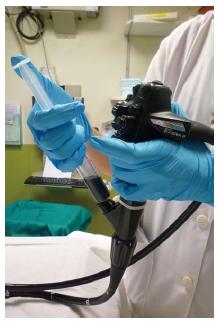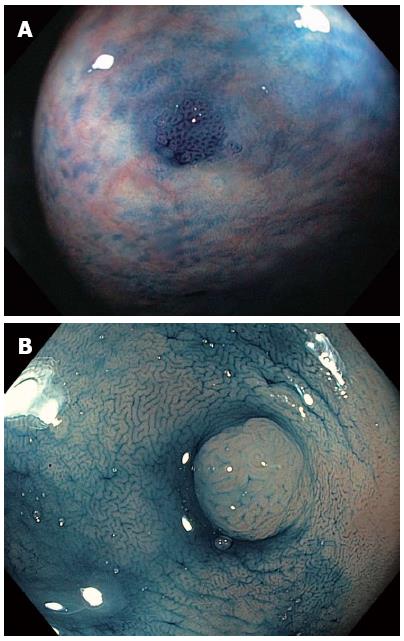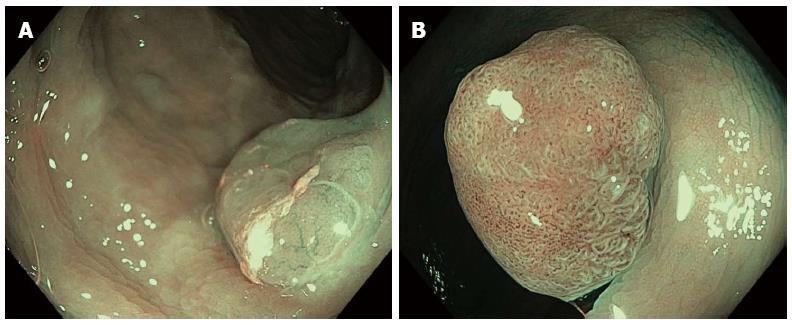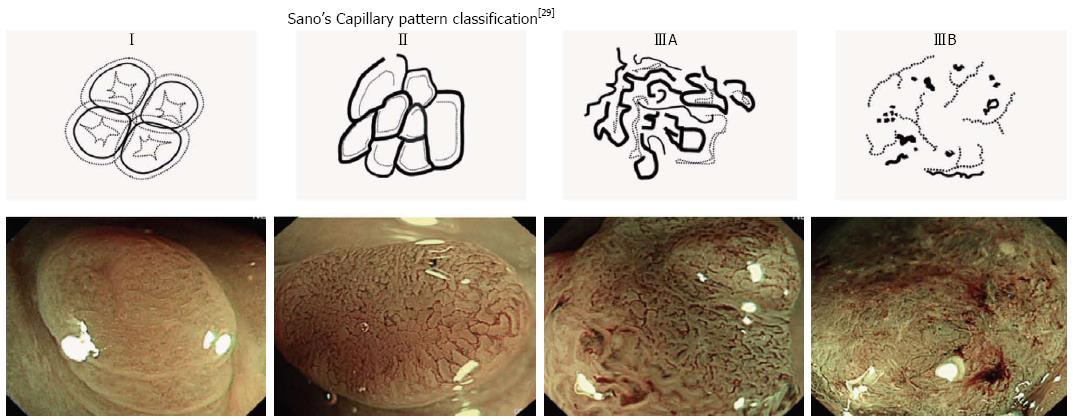Copyright
©2014 Baishideng Publishing Group Inc.
World J Gastroenterol. Jul 14, 2014; 20(26): 8449-8457
Published online Jul 14, 2014. doi: 10.3748/wjg.v20.i26.8449
Published online Jul 14, 2014. doi: 10.3748/wjg.v20.i26.8449
Figure 1 Indigo carmine staining for chromoendoscopy.
A: Colorectal mucosa after cleansing with mucolytic and de-foaming agents; B: Instillation of dye using a spray catheter; C: Indigo carmine staining result.
Figure 2 Local application of chromoendoscopy with a single-use syringe through the endoscope channel.
Figure 3 High-resolution endoscopic images of indigo carmine staining for Kudo’s pit pattern classification.
A: Type II diminutive rectal hyperplastic polyp; B: Type IIIL tubular adenoma with low-grade dysplasia.
Figure 4 Sessile serrated adenoma type II-O.
Figure 5 High-resolution endoscopic image of narrow band imaging.
A: Hyperplastic polyp with weak vascular pattern intensity and type II Kudo’s pit pattern classification; B: Tubular adenoma with foci of high grade dysplasia exhibiting strong vascular pattern intensity and type IIIL Kudo’s pit pattern classification.
Figure 6 Sano’s capillary vessel classification.
Adapted from Uraoka et al[29].
Figure 7 Narrow band imaging-international colorectal endoscopic classification.
A: Hyperplastic polyp, narrow band imaging-international colorectal endoscopic (NICE) Type 1; B: Tubular adenoma with low-grade dysplasia, NICE Type 2; C: Deep invasive cancer, NICE Type 3.
- Citation: Lopez-Ceron M, Sanabria E, Pellise M. Colonic polyps: Is it useful to characterize them with advanced endoscopy? World J Gastroenterol 2014; 20(26): 8449-8457
- URL: https://www.wjgnet.com/1007-9327/full/v20/i26/8449.htm
- DOI: https://dx.doi.org/10.3748/wjg.v20.i26.8449















